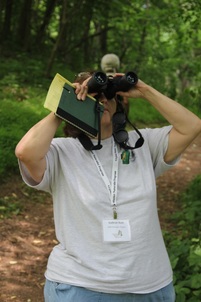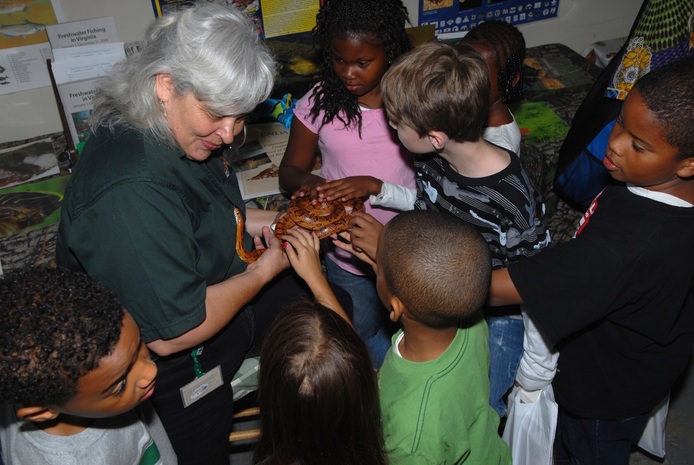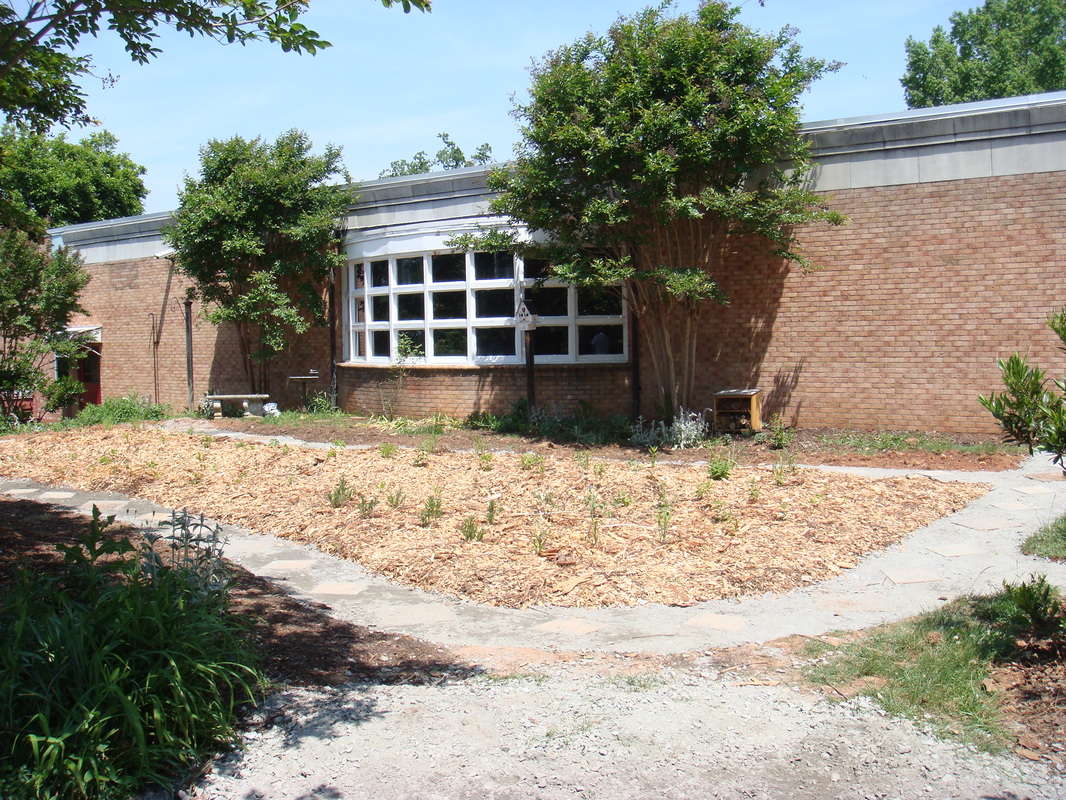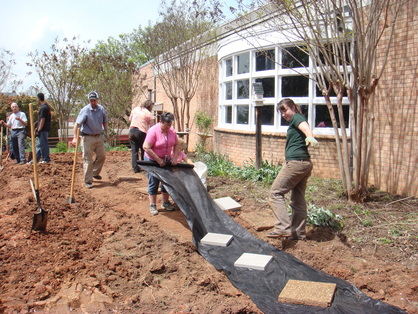Continuing Our 10th Anniversary Celebration: The Virginia Master Naturalist Program Trivia Contest!
 VMN volunteer observing birds at the Driven to Discover training in May 2015.
VMN volunteer observing birds at the Driven to Discover training in May 2015.
How much do you really know about the Virginia Master Naturalist program? Maybe you know some basics, such as who our sponsoring agencies are and where our chapters are located. How about the finer details, like which species have been featured on the recertification pins or the name of our newest chapter? Test your knowledge by participating in our trivia contest. The questions are listed below, but you’ll need to go to the trivia contest survey page to submit your answers.
The contest rules include:
- Responses must be entered, along with requested contact information, into the online survey form by Wednesday, September 30.
- On October 1, we will compile the entries that have 100% correct answers. We then will randomly select 3 entries from this group to receive limited edition Virginia Master Naturalist logo items. More info on those coming soon!
- Other correct respondents will be recognized on the VMN blog on or shortly after October 1. We will also post the correct responses there.
- Legitimate sources for finding the answers include your fellow VMN volunteers, program partners and sponsors, social media, VMN publications and website, or your own memory. You may not ask program staff (Alycia, Michelle, or Tiffany) for the answers.
- VMN program staff and current or former Steering and Executive Committee members are not eligible for the prizes, but they can still be recognized on the blog if they participate.
The Questions:
1. We now have annual statewide or regional conferences for the VMN program. They are a time to come together to celebrate accomplishments of our volunteers, explore a new area of the state, and participate in continuing education. In what city and in which year was the first VMN statewide conference held?
2. At the beginning of the program, we started new chapters in batches. How many chapters were started in the first wave or cohort of VMN chapters?
3. We are fortunate to have many Virginia state agencies supporting our program. List each of the seven state agency sponsors of the VMN program by name and indicate which one has joined most recently.
4. We have been using the same logo since close to the beginning of the program. What is the scientific name of the organism featured in the VMN program logo?
5. VMN volunteers who re-certify by completing 40 hours of volunteering and 8 hours of continuing education each year now receive special pins with Virginia species. What five species have been featured on VMN recertification pins? List them by common name.
6. Choosing a chapter name can sometimes be hard! Which VMN chapter changed its name a year or two after getting started? Identify both its former and its current name.
7. Our program has grown quickly! How many VMN volunteers had been trained between the beginning of the program and the end of 2014?
8. Representatives from our sponsoring agencies provide input into the program through two committees. Name three current members of the VMN Executive Committee.
9. In 2013 and 2014, we conducted a needs assessment and strategic planning process for the program to guide us through our next five years. Name one goal identified for the VMN program to achieve by 2020 in its strategic plan.
10. We’re still reaching new parts of the state! What is the name of the newest VMN chapter?
Submit your answers and enter the contest at http://tinyurl.com/qzvy5wx!



